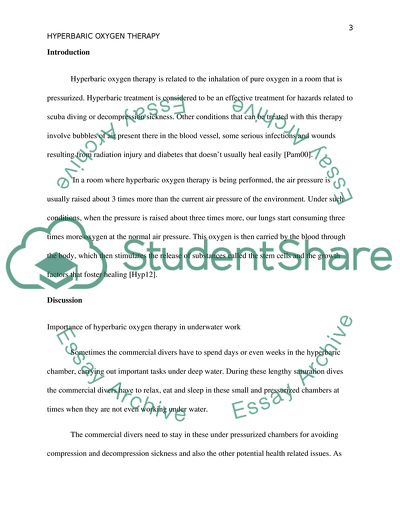Cite this document
(Hyperbaric Oxygen Therapy Report Example | Topics and Well Written Essays - 1750 words, n.d.)
Hyperbaric Oxygen Therapy Report Example | Topics and Well Written Essays - 1750 words. https://studentshare.org/health-sciences-medicine/1816798-hyperbaric-oxygen-therapy
Hyperbaric Oxygen Therapy Report Example | Topics and Well Written Essays - 1750 words. https://studentshare.org/health-sciences-medicine/1816798-hyperbaric-oxygen-therapy
(Hyperbaric Oxygen Therapy Report Example | Topics and Well Written Essays - 1750 Words)
Hyperbaric Oxygen Therapy Report Example | Topics and Well Written Essays - 1750 Words. https://studentshare.org/health-sciences-medicine/1816798-hyperbaric-oxygen-therapy.
Hyperbaric Oxygen Therapy Report Example | Topics and Well Written Essays - 1750 Words. https://studentshare.org/health-sciences-medicine/1816798-hyperbaric-oxygen-therapy.
“Hyperbaric Oxygen Therapy Report Example | Topics and Well Written Essays - 1750 Words”. https://studentshare.org/health-sciences-medicine/1816798-hyperbaric-oxygen-therapy.


